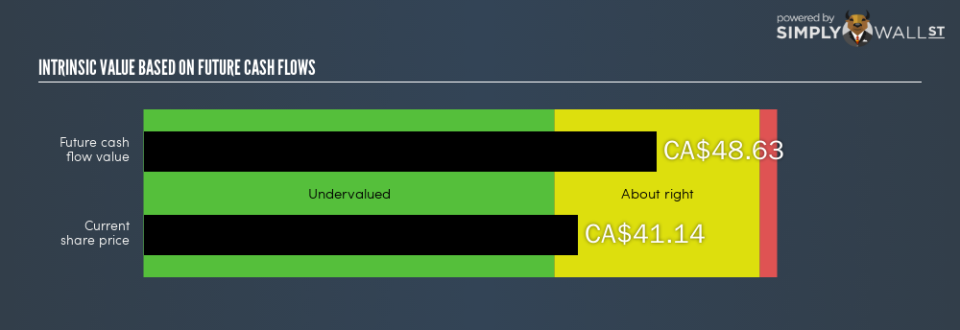goeasy Ltd. (TSE:GSY) Is Undervalued By 15.4%

Pricing GSY, a financial stock, can be difficult since consumer finance businesses have cash flows that are affected by regulations that are not imposed upon other sectors. For example, businesses that deal with loans are required to hold more capital to reduce the risk to shareholders. Examining line items like book values, in addition to the return and cost of equity, can be appropriate for assessing GSY’s intrinsic value. Today we’ll take a look at how to value GSY in a reasonably accurate and straightforward way.
See our latest analysis for goeasy
Want to help shape the future of investing tools and platforms? Take the survey and be part of one of the most advanced studies of stock market investors to date.
Why Excess Return Model?
Before we begin, remember that financial stocks differ in terms of regulation and balance sheet composition. Canada’s financial regulatory environment is relatively strict. Furthermore, consumer financials tend to not hold large amounts of physical assets on their books. This means the Excess Returns model is best suited for calculating the intrinsic value of GSY rather than the traditional discounted cash flow model, which has more emphasis on things like capital expenditure and depreciation.
Deriving GSY’s True Value
The main assumption for this model is, the value of the company is how much money it can generate from its current level of equity capital, in excess of the cost of that capital. The returns in excess of cost of equity is called excess returns:
Excess Return Per Share = (Stable Return On Equity – Cost Of Equity) (Book Value Of Equity Per Share)
= (0.23% – 14%) x CA$27.79 = CA$2.56
We use this value to calculate the terminal value of the company, which is how much we expect the company to continue to earn every year, forever. This is a common component of discounted cash flow models:
Terminal Value Per Share = Excess Return Per Share / (Cost of Equity – Expected Growth Rate)
= CA$2.56 / (14% – 1.9%) = CA$20.84
These factors are combined to calculate the true value of GSY’s stock:
Value Per Share = Book Value of Equity Per Share + Terminal Value Per Share
= CA$27.79 + CA$20.84 = CA$48.63
This results in an intrinsic value of CA$48.63. Relative to the present share price of CA$41.14, GSY is currently priced in-line with its intrinsic value. This means GSY isn’t an attractive buy right now. Pricing is only one aspect when you’re looking at whether to buy or sell GSY. Fundamental factors are key to determining if GSY fits with the rest of your portfolio holdings.
Next Steps:
For consumer financials, there are three key aspects you should look at:
Financial health: Does it have a healthy balance sheet? Take a look at our free bank analysis with six simple checks on things like leverage and risk.
Future earnings: What does the market think of GSY going forward? Our analyst growth expectation chart helps visualize GSY’s growth potential over the upcoming years.
Dividends: Most people buy financial stocks for their healthy and stable dividends. Check out whether GSY is a dividend Rockstar with our historical and future dividend analysis.
For more details and sources, take a look at our full calculation on GSY here.
To help readers see past the short term volatility of the financial market, we aim to bring you a long-term focused research analysis purely driven by fundamental data. Note that our analysis does not factor in the latest price-sensitive company announcements.
The author is an independent contributor and at the time of publication had no position in the stocks mentioned. For errors that warrant correction please contact the editor at editorial-team@simplywallst.com.

